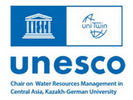



Year: 2016
Collections: Short Communications
Topics: Water, Climate, Agriculture, Sustainable Development
Authors: Krutov D.A.
Countries: Kazakhstan
Source: Central Asian Journal of Water Research
The article discusses current trends associated with the refusal to control the stress state of concrete dams. The importance of stress control for determining the actual state of the dam is emphasized. Recommendations are given for the revision of regulatory and methodological documents in the field of safety of hydraulic structures.
Year: 2023
Collections: Scientific Publications
Topics: Climate
Authors: Kulikov M., Shibkov E., Isaev E., Azarov A., Sidle R.
Countries: Kyrgyzstan
Source: Central Asian Journal of Sustainability and Climate Research
Understanding forest phenology is essential for monitoring global carbon budgets and managing vegetation resources in a changing climate. In southern Kyrgyzstan, walnut and wild apple trees dominate the forest landscape. These forests contain unique genetic diversity and offer potential for the development of climate-resilient crop varieties. They also support local communities through activities such as grazing, firewood collection, and fruit harvesting. However, these practices pose a threat to natural regeneration. Climate change exacerbates these challenges by altering their ecological niche. Despite this, few studies have examined forest phenology and its relationship to climate in Kyrgyzstan.
Year: 2020
Collections: Research Paper
Topics: Water
Authors: Mitusov A., Normakhmedova Z. O., Kurbonov N. B.
Countries: Tajikistan
Year: 2022
Collections: Scientific Publications
Topics: Water, Irrigation, IWRM
Authors: Conrad Christopher, Usman Muhammad, Kenjabaev Shavkat, Ziganshina Dinara, Kussainova Maira, Nikolayenko Alexandr
Countries: Kazakhstan, Kyrgyzstan, Uzbekistan, Tajikistan, Turkmenistan, Afghanistan
Source:
Management interventions to increase water use efficiency in the irrigation sector of Central Asia were introduced but a scientific control instrument is still missing - The online tool WUEMoCA provides relevant irrigation performance indicators in the Aral Sea Basin from satellite data in combination with additional sources - WUEMoCA-based analysis of water security and water use efficiency showed: o 11 out of 33 provinces in the Aral Sea Basin were below the critical level to supply crop water demands for more than 5 years in 2000-2018. o Irrigation water use efficiency is very low in general (55%-60%) and scientific data hints at missing or failing water management interventions in the Amu Darya and Zarafshan basins. - WUEMoCA can strategically supplement the ongoing digitization efforts of the countries in the water sector. - By utilizing WUEMoCA-like tools, Central Asian governments and water management bodies will have new platforms for steering and assessing current and future strategic interventions in regional water management.
Year: 2023
Collections: Scientific Publications
Topics: Agriculture, Sustainable Development, Management
Authors: Conrad Christopher, Kussainova Maira, Schmidt G.
Countries: Kazakhstan, Kyrgyzstan, Uzbekistan, Tajikistan, Turkmenistan
Source: Central Asian Journal of Sustainability and Climate Research
The increasing demand for food, bioenergy and other agricultural products, as well as the intensification of climate change, pose special challenges for Central Asia’s agricultural sector in terms of implementing sustainable land management. Central Asia is a climate change hot spot. Adaptation measures of agricultural land use to climate change imply new trade-offs in terms of quality and provision of ecosystem services. Based on literature studies, this paper identifies examples of such trade-offs and presents possible solutions. The ecoregions of Central Asia show strong interdependencies. Therefore, a special focus has to be put on the transregional effects of the use of ecosystem services. Against the background of different concepts of sustainable development (ESS, SDG, Global Environmental Syndromes) integrative approaches for sustainable use and design of landscapes are necessary.
For questions about cooperation, please contact us at: